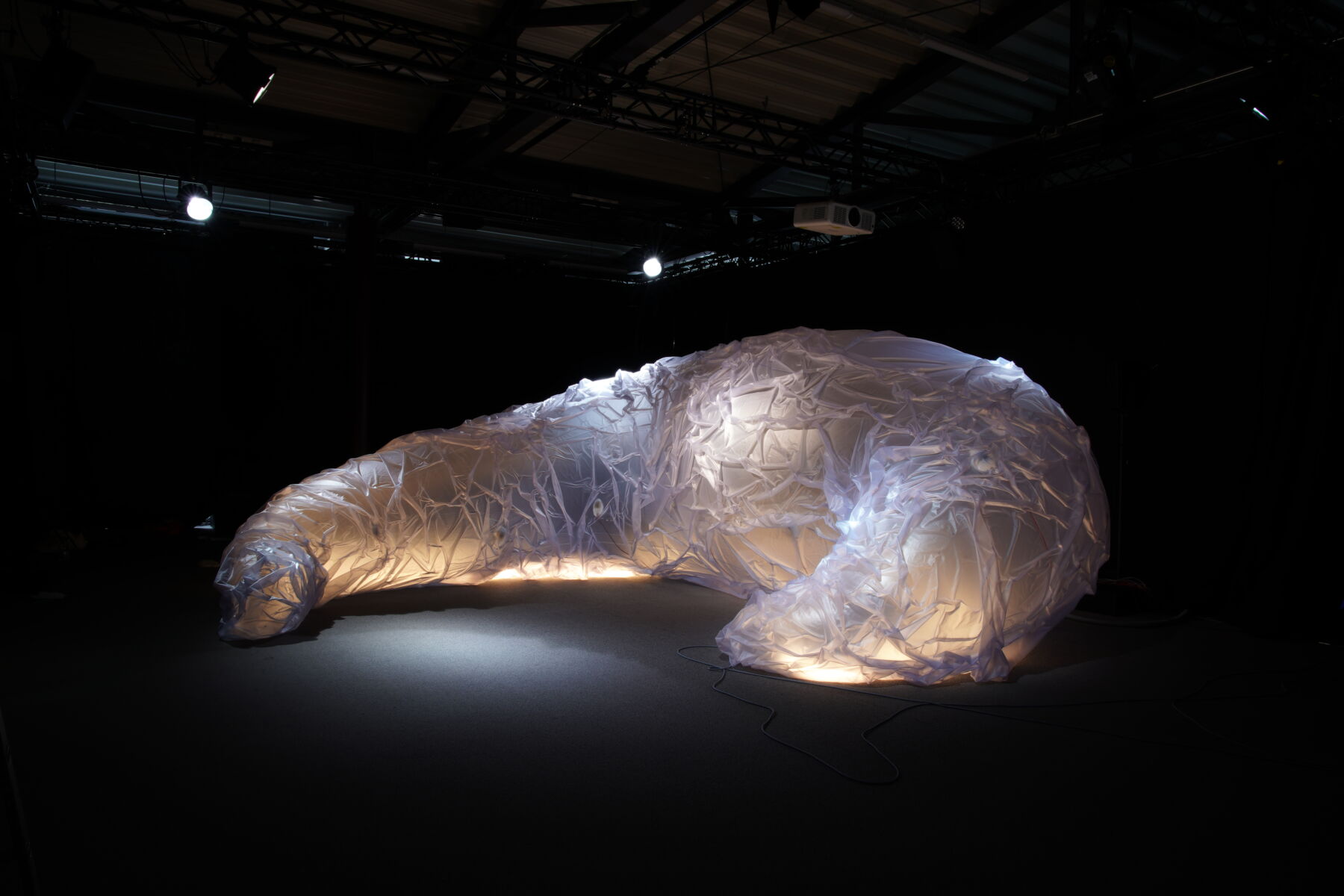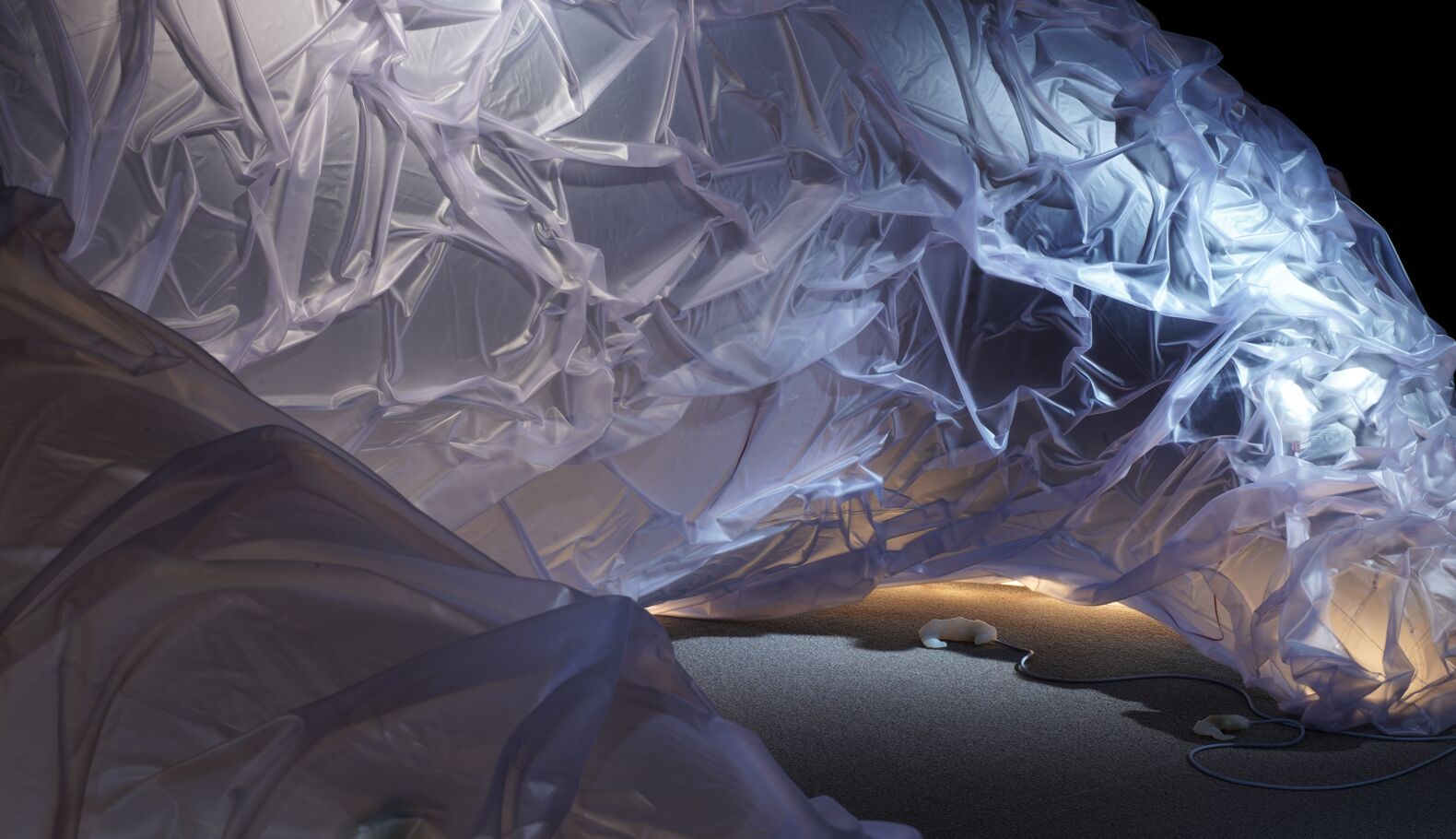Text by Ana Prendes

Within our bodies, a vibrant ecosystem of microorganisms fuels the physical movements and chemical breakdowns that generate ever-evolving sonic signatures unique to each of us. Listening to these gut sounds attunes us to our intuitions. Often overlooked and stigmatised, the subtle, physical sensations guide our decision-making yet remain left to resonate unnoticed. A strange form of intimacy unfolds when the body—our own and others’—becomes audible to itself.
In stuff change / látková přeměna, artists Lea Luka Sikau and Denisa Pubalova transform this intimacy into a collective resonance. The subtle orchestration of metabolic processes—gurgles, growls, rumbles—becomes an exploration of the acoustic and haptic qualities of our gut feeling. Sikau, an artist-researcher and mezzo-soprano, holds a PhD in post-anthropocentric theories, new opera and rehearsal ethnography from the University of Cambridge. Pubalova is a media artist, creative coder, and researcher on environmental philosophy. Their collaborative work examines shared interests in critical posthumanism, bodily processes, and more-than-human communication.
During a residency with the European Commission’s S+T+ARTS programme, the artists examined medical technologies for gastroenterological diseases and worked with patients living with an artificial outlet of the bowel. Collaborating with the German Association for Stoma Patients (ILCO), they captured the altered acoustics of these patients, addressing how medicalised guts reshape one’s perception of and relationship to their bodies. Their work evolved further during a production residency at Ligeti Zentrum in Hamburg, together with the University Hospital UKE. They worked with experts in immersive spatial audio, actuator technology, haptics, and music therapy, as well as with sound artist Ella Kay.
As you move through the darkened space, murmurs, growls, and rumbles emerge from the inflatable sculpture, swelling and contracting outward. Kay transforms these sounds, gathered from both their own bodies and those of patients, into an electroacoustic gutscape that encourages deep listening: sonic textures unfold, from expansive howls and crisp effervescence to crescendos of sirens and squelches, followed by breathy, oceanic hums.
The experience pulls you into the digestive process itself. Spatialised across the room, sounds swirl and shift, evolving from a soothing, healing atmosphere to a radical sonic climax, before quieting into a final airy rumble—leaving an already-entangled silence. By reclaiming what is dismissed as embarrassing noise, the complex composition refocuses our attention on the sonic richness of our gastrointestinal activity.
The sound dramaturgy seamlessly incorporates tactile engagement. Amplified vibrations ripple beneath your fingertips as you are drawn closer, squeezing the soft, plastic-like surfaces of the sculpture. The chewy, textured cushions scattered across the floor invite you to lie down and participate. Pressing them gently to your belly, hydrophones amplify your internal rhythms. Experimenting with my own acoustics, I found a new bodily awareness–one that is intimate, improvisational, deeply synchronised with the sounds of others. As my inner sounds grew louder, I began to question what emerges from within and what flows between bodies. I was no longer an isolated individual but part of a larger metabolic process, one that links you to the rhythms of those around you. Attuned to our own and each other’s gut sounds, we tap into a multi-organ dialogue beyond semantics.
‘In some aspects, reality is initially a food,’ wrote Gaston Bachelard in 1938. The philosopher referred to the prescientific European perception of digestion. In that worldview, the ability of the stomach to break down food wasn’t just mechanical but a metaphysical act— a process in which the body transforms the external world into itself. Though this understanding may feel distant today, stuff change situates our digestive process within the thresholds where the body meets the world, opening up a post-anthropocentric understanding of bodies as porous, teeming with other life entities, non-human agents, and technological forms.
The phrase ‘listening to your gut’ is disconnected from the literal sounds of the organ itself. In the process of listening ‘deeply’, according to Pauline Oliveros, intuition is one of the modes of thought that allows direct knowing. Stuff change offers a rehearsal space to access and trust the unspoken knowledge that comes from within. As the gutscape fades in the space, we are left with a heightened awareness—of silences and reverberations—that lingers long after the last echoes dissipate, leaving us attuned to a deeper, more embodied understanding of our gut feelings.






